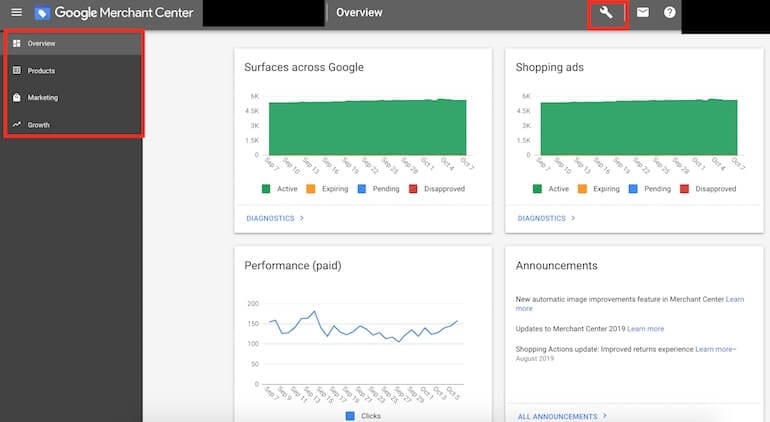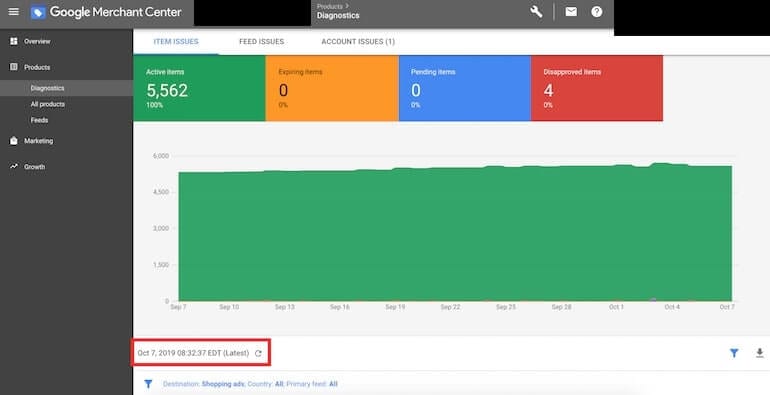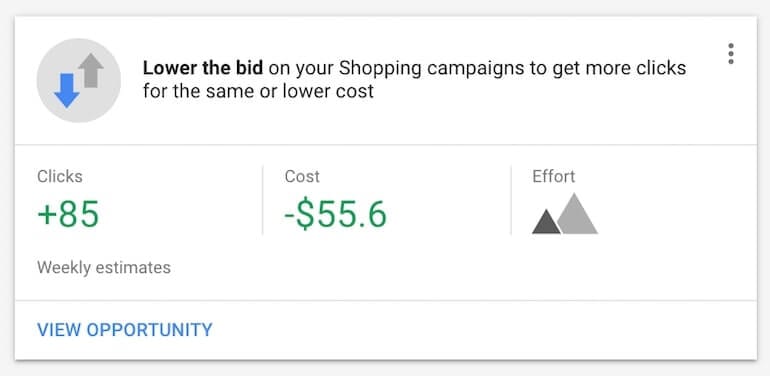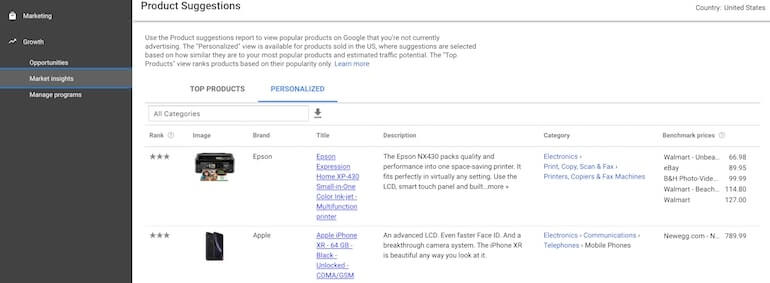Fall 2019 Updates to Google Merchant Center

Google quietly rolled out several updates to Google Merchant Center in August 2019, which you may have missed if you weren’t paying close enough attention. While these updates were minor in nature, as advertisers it’s important to find ways to leverage new features as they are rolled out to continue bringing innovative ideas to grow our clients’ businesses. I’m going to recap some of the smaller updates and explain how the larger updates fit into (what I think is) Google’s long term plan for Merchant Center, managing feeds/shopping, and integrating their various products.
Navigation and Design Updates
My two favorite Fall 2019 updates are the updated design and navigation elements for the Merchant Center UI. Google has simplified the left-hand navigation menu, condensing the most commonly used features into tabs labeled products, marketing, growth, and a few more depending on what is active. The overview tab gives a high-level view of different programs being managed through the Merchant Center to get a quick look to see if things are functioning correctly.

Less used tabs from the previous left-hand navigation menu have been moved to the wrench drop-down in the top right. Here you can find all the tools and settings related to Shipping and Returns, Taxes, Business information, and much more.
The overall design of the site has been revamped to closely resemble the re-branding of other Google products over the last year. This is a continuation of the play for Google to integrate their products, improve cohesion across entities, and reduce friction when learning interfaces. This usability change will especially help smaller advertisers who have less time to spend on each platform and can get in and out more easily.
Changes to Promotions & Diagnostics
In the new “marketing” tab on the left navigation menu, you can find all the promotional feed and setup options. Advertisers now have the ability to see the different stages of approvals for promotion extensions for Google Shopping. This is an expansion of the Fall 2018 update that completely overhauled the promotion extension creation interface. E-commerce account managers that have a hefty promotion schedule will appreciate this update because it allows for more transparency into the review process to reduce the unknown of when your promotions will go live.

Along the lines of product disapprovals, I have to also mention Google has updated their product diagnostics page from updating twice daily to near real-time updates. This will help immensely when a product feed is being updated or switched and less time will be needed to wait for updates to see if your changes worked or not.
Bonus tip: Google also confirmed in August that GTINs, MPNs, and Brand Names are no longer required for products to be approved for Google Shopping. Having these fields will still enrich your product data and make the products easier to find.

The Meat of the Revamp
The newest feature added into Merchant Center is the ‘growth’ tab on the left-hand nav menu which houses three main components: opportunities, market insights, and manage programs.
The opportunities section is a clear replica of the ‘recommendations’ section within Google Ads and provides high-level ideas for optimizing your Shopping campaigns. This is aligned with Google’s market position of focusing more on self-serve advertisers that don’t have time for many day-to-day optimizations. We have seen this trend in the industry for years now, with Google catering more and more to smaller advertisers who have less time to spend in accounts and need to leverage machine learning for 1-click optimizations. Find out what other trends you can get in front of now in our latest webinar, predictions for online marketplaces in 2020.

The ‘market insight’ tab is a competitor product tool that aggregates product pricing and volume insights. The ‘top products tab’ shows overall top products on Google you aren’t advertising, while the ‘personalized’ tab shows products that related to what’s in your feed that you’re not advertising.

At first glance, this section may not help many advertisers who have set product SKUs or are the sole distributor of certain products, but there are several out-of-the-box ways we can leverage this data as digital advertising managers. We can:
- Use this product data to provide clients with insight into trends in their industry that are specific to digital
- Investigate a dip in performance for a particular SKU, see if any products in this list overlap with that SKU, and what search volume it is experiencing
- Get in front of potential query exclusion through analyzing the current top products.
Conclusion
Google has been amping up the frequency of updates relating to the Merchant Center, product feeds, and Shopping programs throughout 2019. Moving into 2020, my prediction is for Google to continue rolling out updates aimed at smaller advertisers that reduce barriers to entry into the online marketplace.



